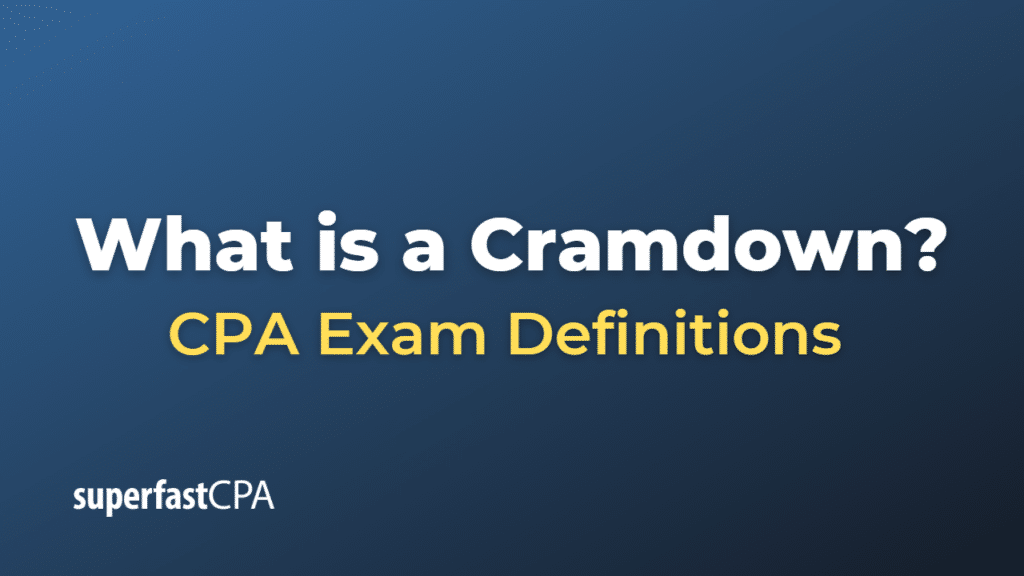Cramdown
A “cramdown” is a term used in bankruptcy law that refers to a court-approved plan that allows a debtor to reduce the amount owed to creditors, regardless of whether the creditors agree to the plan. It’s called a cramdown because the new terms are essentially “crammed down” the creditors’ throats.
Cramdowns are typically used in Chapter 11 and Chapter 13 bankruptcy proceedings in the United States. They can allow debtors to reduce the principal balance of a debt, lower the interest rate, or extend the repayment period.
For example, in a Chapter 13 bankruptcy, a debtor could potentially use a cramdown to reduce the balance of a car loan to the current market value of the car, particularly if the loan balance is higher than the value of the car.
It’s important to note that there are certain restrictions on cramdowns. For instance, in a Chapter 13 bankruptcy, a cramdown can’t be used on a mortgage for a primary residence. However, it may be used on other types of secured debts or on mortgages for non-primary residences.
As with all bankruptcy-related matters, cramdowns are complex and generally require the guidance of a qualified bankruptcy attorney.
Example of a Cramdown
Here’s an example of how a cramdown could work in a Chapter 13 bankruptcy case:
Suppose John has an auto loan with a balance of $15,000, but the current market value of the car is only $10,000. Additionally, let’s assume John has recently filed for Chapter 13 bankruptcy.
In this case, John might be able to use a cramdown to reduce the balance of the auto loan to the car’s current market value. Essentially, the loan would be split into two parts:
- A secured loan for the amount equal to the car’s current market value ($10,000). This must be paid off in full through the Chapter 13 repayment plan.
- An unsecured loan for the remaining balance ($5,000). This does not have to be paid off in full; instead, it’s treated like other unsecured debts (like credit card debt) in the bankruptcy. The exact amount that must be paid on this part depends on various factors, such as John’s income, the length of his repayment plan, and the total amount of his unsecured debts.
So, if the cramdown is approved by the bankruptcy court, John would only need to pay off the car’s current market value ($10,000) in full. The rest of the auto loan ($5,000) would be treated as an unsecured debt, and John may only need to pay off a portion of this amount, depending on the terms of his Chapter 13 repayment plan.
Please note that this is a simplified example, and the actual process can be more complex. The ability to do a cramdown and the specific rules can vary depending on the bankruptcy laws and the specific circumstances of the debtor. Therefore, legal advice should be sought in such situations.













